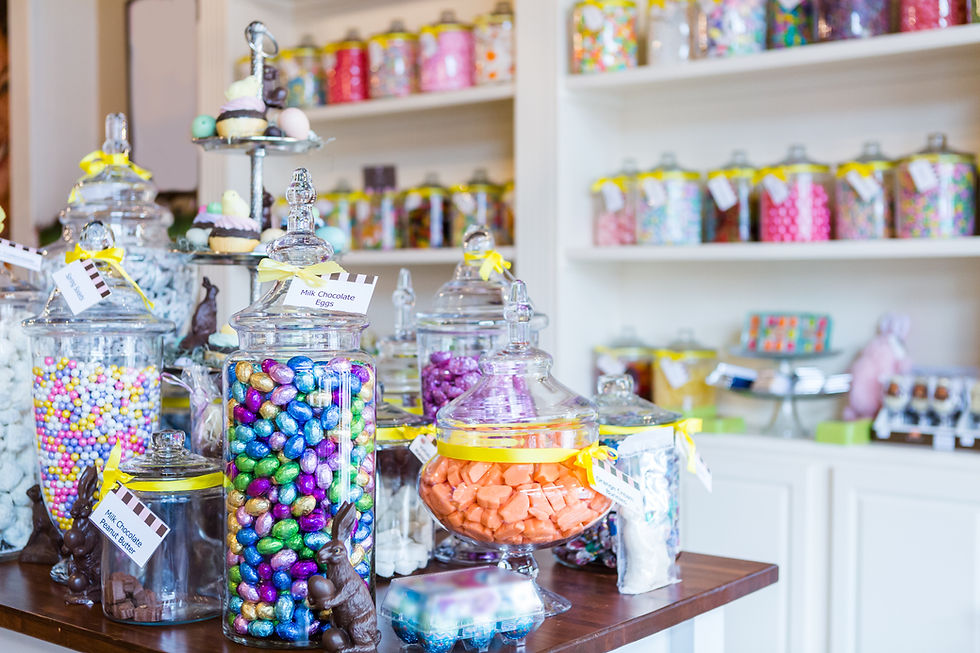Esters & Phenols in Brewing, Perfumes, Food Making
- Sylvia Rose

- Jan 22
- 5 min read
Updated: Feb 2
Esters and phenols are compounds creating flavors, colors and aromas for sensory experience. Artisans in brewing, perfumery or food must know the difference, good or bad qualities, and effective uses of phenols and esters.

Esters and phenols are significant in brewing, perfumery, and food production. While they both contribute to flavor and aroma profiles, their chemical structures, properties, and the outcomes differ significantly.
About Esters
Esters are organic compounds formed through a reaction between an acid (usually a carboxylic acid) and an alcohol, known as esterification. They are typically characterized by pleasant, fruity fragrances and flavors.

Esters are created by plants and found in fruits, leaves, flowers, stems. For instance, isoamyl acetate gives bananas their flavor, while ethyl acetate imparts a pear-like aroma.
According to the Flavor and Extract Manufacturers Association, the use of esters in food and beverage production can improve consumer acceptance by over 25%. Esters add to the appeal of products.

About Phenols
Phenols feature a hydroxyl group (-OH) attached to an aromatic hydrocarbon ring. This structure gives them diverse characteristics, resulting in distinct flavors and aromas.
While some phenols can produce pleasant scents, others carry harsher notes. Certain phenolic compounds in brewing can contribute spicy or smoky flavors, but may also lead to off-flavors, which can ruin a batch.
Phenols are crucial in perfumery as well, adding complexity and depth to fragrances. Their unique scent profiles can significantly enhance a perfume's appeal.

Brewing
Esters: Esters are integral to production of beer and other fermented beverages. During fermentation, yeast, particularly Saccharomyces cerevisiae, produces esters as metabolic byproducts.
Common esters, such as ethyl acetate and isoamyl acetate, lead to fruity notes like banana, pear, and apple, enhancing the sensory profile of beers. The production of esters can be influenced by various factors.

These include fermentation temperature, yeast strain, and the composition of the wort. Brewers manipulate these factors to emphasize or downplay specific ester profiles.
One distinct style is Hefeweizen, characterized by banana and clove flavors from yeast-derived esters. Esters dramatically influence the fermentation process.

By adjusting fermentation temperatures by just a few degrees, brewers can increase ester production. Choosing different yeast strains further allows brewers to craft flavors to their preferences.
The interaction between esters and other components, like phenols, also impacts the product. Balancing these compounds can define a beer's identity.

Phenols: Phenols in brewing can arise from both raw ingredients and fermentation processes. A prominent phenolic compound in beer is 4-vinyl guaiacol, which produces clove-like aromas.
Phenols in the brewing process come from malt, hops, and yeast, influencing aroma and flavor. For instance, Belgian-style yeasts produce phenols associated with the clove-like notes.

Elevated levels of phenolic compounds can cause ugly flavors and aromas like those of medicine or spoilage. Brewers must monitor fermentation to prevent phenol over-production and keep a balanced flavor profile.
Balancing beneficial phenols with potential negatives can achieve a well-rounded, flavorful beer.

Esters & Phenols in Perfumery
Esters: In fragrance making, esters are prized for their ability to impart floral, sweet and fruity aromas. Ethyl butyrate, with its pineapple-like scent, and isoamyl acetate, reminiscent of bananas, are frequently used.
Their volatility and ease of synthesis make them suitable as top notes, contributing freshness and brightness to compositions.
Perfume makers often blend esters with other aromatic agents, using the distinct fruity scents to enhance and balance more intense notes. Blending techniques can create fragrances to evoke pleasant feelings and memories.

Phenols: Phenols have another place in perfume. While they add depth and complexity, compounds like cresols and eugenol (in clove oil) evoke earthy, spicy, or woody aromas. Vanillin introduces a sweet, creamy scent.
Phenolic notes provide a grounding effect in fragrance compositions, balancing sweeter esters and creating olfactory harmony. Their distinct characteristics make them suitable for niche or artisanal fragrances.
Due to their strength, phenolic compounds must be used with caution to avoid overpowering other notes in a scent profile. The right balance is essential for creation of captivating fragrances.

Food Making
Esters: The food industry uses esters in flavoring and food preservation. Synthetic esters, designed to mimic fruity or sweet flavors, are common in packaged foods, candies, and baked goods to add product appeal.
In food, esters created during fermentation add depth and richness to products like cheese and yogurt. They offer an array of appetizing attractive aromas and flavors.

Phenols: Phenols contribute to both flavor and preservation, especially in the context of spices and herbs. Compounds such as thymol (found in thyme) and carvacrol (found in oregano) impart distinctive flavors.
The balance of flavor, preservation, and aroma of phenolic compounds transcends into culinary practices. Phenols can present both advantages and challenges in cuisine.

Naturally found in many fruits and vegetables, phenolic compounds can enhance flavors and provide health benefits. Olives are bitter until cured due to oleuropein, a phenolic compound.
Improper use can lead to undesirable smells and tastes. Phenols need to complement intended flavors. Whether in brewing, perfumes or food, the artisan spends time experimenting with tastes, scents and textures.

Non-Fiction Books:
Fiction Books:
READ: Lora Ley Adventures - Germanic Mythology Fiction Series
READ: Reiker For Hire - Victorian Detective Murder Mysteries


